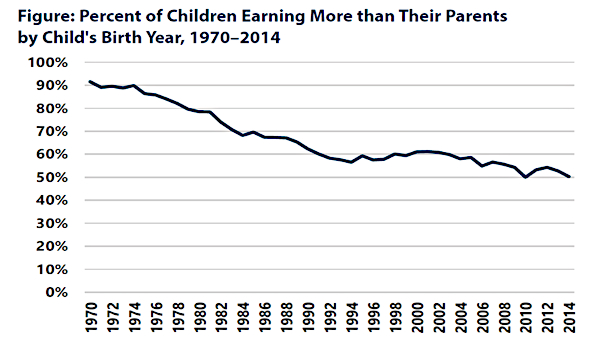Returning to the Gold Standard is Not a Good Idea
Should we take seriously the idea, promoted by World Bank president Robert Zoellick, to partially root the global monetary system in gold? Is gold, as he claims, an “elephant in the room” because it might play a constructive role in reducing speculative turbulence and structural imbalances – or instead, is the fast-rising gold price merely a speculative bubble based on financial sector fears that authorities like U.S. Federal Reserve Chairman Ben Bernanke – who promised to push another $600-billion into the anemic U.S. economy last week – won’t perform their jobs in the ways bankers want?

“Bob Zoellick not only has a lot of historical perspective, but he also understands the global dynamics better than most,” remarked Jim O’Neill, chairman of Goldman Sachs Asset Management. The so-called ‘gold bugs’ who promote the gold standard are also cheering.
Zoellick has a certain perspective, to be sure, fusing neoconservatism and neoliberalism, but does he really understand the way the world works?
Zoellick’s background includes:
- A role in destroying the U.S. Savings & Loan industry while a leading official at the U.S. Treasury Deparment during the late 1980s;
- Connivance in dangerous 1990s financial deregulatory strategies while serving as the second-ranking banker at top U.S. housing lender FannieMae (which effectively went bankrupt in 2008);
- Founding membership of the neocon Project for a New American Century (now formally defunct but by the late 1990s a crucial think tank for war-mongering against Iraq);
- Vote-counting duties in Florida on behalf of George W. Bush in December 2000;
- Advisory relationships to Enron and Alliance Capital just before their early 2000s demise;
- Wreckage of the World Trade Organisation at Cancun in 2003 while serving as Bush’s no-compromise trade representative;
- Mismanagement of U.S. foreign policy (not to mention the deaths of over a million Iraqis and Afghanis) as deputy to Condolleezza Rice at the U.S. State Department in 2005-06;
- International executive management at Goldman Sachs just before the world financial crisis in 2006-07; and
- Running the World Bank since 2007, claiming to transform it into a Green Bank and receptacle for climate finance, while in reality dramatically increasing coal lending (its largest-ever loan was in April to finance the world’s fourth-largest coal-fired power plant, South Africa’s own Medupi).
How much more damage can Zoellick do? A former U.S. financial official and now a widely cited University of California professor, Brad deLong, called him “the stupidest man in the world” when the Financial Times ran Zoellick’s arguments for rooting money in gold last Sunday.
It would be equally stupid for South African officials to entertain his idea, as South Africa’s Minister of Finance Pravin Gordhan appeared to do last week.
What happened the last time we suffered a gold standard, in the years prior to 1932?
In 1929, South African bankers were extremely bullish about the local economy. Their ratio of loans to deposits soared from 63 per cent in 1926 to 85 per cent in 1930, with half the increase in 1929. Land speculation meant that “in some districts the value attributed to farm property looked to be 50 per cent too high,” according to Standard Bank’s historian. (And today SA suffers the world’s highest property bubble, four times the size of the U.S. bubble at its peak, says The Economist.)
To illustrate the strain between local and international financial forces, Standard Bank was under a great deal of pressure to export funds to its London head office. The Reserve Bank intervened, imposing a levy for bank remittances and increasing the interest rate it charged local banks. (Likewise today, SA’s outflows of profits, dividends and interest put us at the highest level among emerging markets, so high that last year The Economist rated SA the world’s riskiest of 17 peer economies.)
The October 1929 crash was initially felt mainly by the diamond merchants, since rich New Yorkers’ panic liquidation of their personal assets flattened diamond prices. As the general price level of most goods fell over the next few years, agricultural products bore the brunt.
When exports decline, one antidote is to devalue the currency. But when a country is on the gold standard, the currency is valued according to how much gold the country has in reserve. When such countries go deeply into debt and import more than they export, gold stocks decline to make payments.
Abandoning the Gold Standard
Most major countries adopted the gold standard in the last quarter of the 19th century, mainly because of pressure from commercial capitalists to have convertible currency, to lubricate international trade. But during the 1930s, too many countries simply couldn’t afford to back their currencies with gold, and in 1932, after Britain – still at the centre of international finance – abandoned the gold standard, 32 countries followed [Ed.: including Canada], with only France, Belgium, Switzerland and the Netherlands holding out until 1936.
As the world’s leading gold producer at the time, South Africa had no technical difficulties remaining on the standard. But because the value of the currency remained high relative to other currencies, exports suffered. At the same time, investors were shifting enormous amounts of money out of South Africa. By the end of 1932, the tensions were overwhelming and the country’s social fabric was tearing, so mining houses led the charge to abandon the gold standard and devalue the currency.
“The purely speculative ‘flight of capital’ made the maintenance of the gold standard temporarily difficult in South Africa,” according to the great Stellenbosch economist C.G.W.Schumann. After South Africa ditched the gold standard in 1932, the tie to the currency was broken, and more gold could be mined without weighing down the rest of the economy.
This was one route out of the local depression, but not the only one. Another might have been a major public works and employment programme, some components of which did indeed occur for the benefits of whites later on during the 1930s. But because the Industrial and Commercial Workers Union, Communist Party and African National Congress were weak following five years of intense repression, and because white workers continued to place priority on their struggle for racial supremacy, the mining houses were able to determine the path out of depression.
This time it could be different, but only if the neoliberal bloc in the Treasury and Reserve Bank can be replaced, if substantial interest rate cuts are made to stimulate production and lower the rand’s value, and if strong exchange controls on outflows of capital are implemented (as existed from 1985-95) to prevent yet another uncontrolled crash, as in 1996, 1998, 2001, 2006 and 2008.
But in a world where G20 leaders welcome the presence of men like Zoellick, as Jacob Zuma just did in Seoul, a much stronger push from labour and social movements will be required to dislodge blockages to progress, which now include very zany ideas. •
Resources
- Parasitical Capital Not Lack of Gold the Problem – interview with Jane D’Arista.





